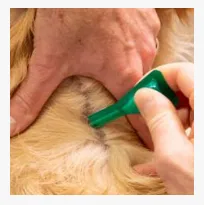- Afrikaans
- Albanian
- Amharic
- Arabic
- Armenian
- Azerbaijani
- Basque
- Belarusian
- Bengali
- Bosnian
- Bulgarian
- Catalan
- Cebuano
- Corsican
- Croatian
- Czech
- Danish
- Dutch
- English
- Esperanto
- Estonian
- Finnish
- French
- Frisian
- Galician
- Georgian
- German
- Greek
- Gujarati
- Haitian Creole
- hausa
- hawaiian
- Hebrew
- Hindi
- Miao
- Hungarian
- Icelandic
- igbo
- Indonesian
- irish
- Italian
- Japanese
- Javanese
- Kannada
- kazakh
- Khmer
- Rwandese
- Korean
- Kurdish
- Kyrgyz
- Lao
- Latin
- Latvian
- Lithuanian
- Luxembourgish
- Macedonian
- Malgashi
- Malay
- Malayalam
- Maltese
- Maori
- Marathi
- Mongolian
- Myanmar
- Nepali
- Norwegian
- Norwegian
- Occitan
- Pashto
- Persian
- Polish
- Portuguese
- Punjabi
- Romanian
- Russian
- Samoan
- Scottish Gaelic
- Serbian
- Sesotho
- Shona
- Sindhi
- Sinhala
- Slovak
- Slovenian
- Somali
- Spanish
- Sundanese
- Swahili
- Swedish
- Tagalog
- Tajik
- Tamil
- Tatar
- Telugu
- Thai
- Turkish
- Turkmen
- Ukrainian
- Urdu
- Uighur
- Uzbek
- Vietnamese
- Welsh
- Bantu
- Yiddish
- Yoruba
- Zulu
Dec . 13, 2024 17:53 Back to list
levamisole oxyclozanide bolus
Levamisole Oxyclozanide Bolus A Comprehensive Overview
Levamisole Oxyclozanide Bolus is an important anthelmintic (anti-parasitic) medication used primarily in veterinary medicine. This formulation combines two potent compounds, levamisole and oxyclozanide, to effectively combat parasitic infections in livestock. Understanding its composition, mechanism of action, uses, dosage, and safety can enhance its therapeutic effectiveness and ensure responsible use in agricultural practices.
Composition and Mechanism of Action
Levamisole is a synthetic imidazothiazole derivative, originally developed as a human anthelmintic, but now predominantly utilized in veterinary medicine. It works as a neuromuscular stimulant, causing paralysis in the target parasites. By agonizing nicotinic acetylcholine receptors in the neuromuscular junction, levamisole effectively disrupts the normal function of the parasite, leading to its expulsion from the host’s body.
On the other hand, oxyclozanide is a member of the salicylanilide family, functioning through a different mechanism. It is particularly effective against trematodes (flukes) and some cestodes (tapeworms). Oxyclozanide interferes with the energy metabolism of these parasites, disrupting their ability to absorb nutrients and leading to their eventual death.
When combined, these two compounds create a synergistic effect that enhances the overall anti-parasitic activity of the bolus, making it a valuable tool for controlling multiple types of parasitic infections in livestock.
Indications and Usage
levamisole oxyclozanide bolus

Levamisole Oxyclozanide Bolus is indicated for the treatment of various parasitic infections, particularly in cattle and sheep. It is effective against a range of gastrointestinal nematodes, lungworms, and trematodes, making it a versatile choice for farmers dealing with different parasitic challenges. The bolus form allows for easy administration, ensuring that the medication is delivered directly to the gastrointestinal tract where the parasites reside.
Farmers and veterinarians should administer the medication based on the specific types of parasites identified. Proper diagnosis is crucial, as indiscriminate use of anthelmintics can lead to drug resistance, a growing concern in veterinary medicine.
Dosage and Administration
The dosage of Levamisole Oxyclozanide Bolus varies based on the type of livestock and the severity of the parasitic infection. It is essential to follow the manufacturer’s instructions or consult a veterinarian for accurate dosing guidelines. Typically, the bolus is administered orally, and it is important to ensure that the animal consumes the entire dosage to maximize efficacy.
Safety and Precautions
While Levamisole Oxyclozanide Bolus is generally safe when used as directed, certain precautions are necessary. Farmers should monitor treated animals for any adverse reactions, including signs of hypersensitivity or gastrointestinal disturbances. It is also crucial to adhere to withdrawal periods before slaughtering treated animals for human consumption to ensure that drug residues do not enter the food chain.
In conclusion, Levamisole Oxyclozanide Bolus serves as an effective solution for controlling parasitic infections in livestock. Its dual-action mechanism provides a comprehensive approach to combating various parasites, thereby supporting animal health and productivity. Responsible use, alongside adherence to veterinary guidance, will contribute to the sustained effectiveness of this valuable veterinary medication in the agricultural sector.
-
Guide to Oxytetracycline Injection
NewsMar.27,2025
-
Guide to Colistin Sulphate
NewsMar.27,2025
-
Gentamicin Sulfate: Uses, Price, And Key Information
NewsMar.27,2025
-
Enrofloxacin Injection: Uses, Price, And Supplier Information
NewsMar.27,2025
-
Dexamethasone Sodium Phosphate Injection: Uses, Price, And Key Information
NewsMar.27,2025
-
Albendazole Tablet: Uses, Dosage, Cost, And Key Information
NewsMar.27,2025













